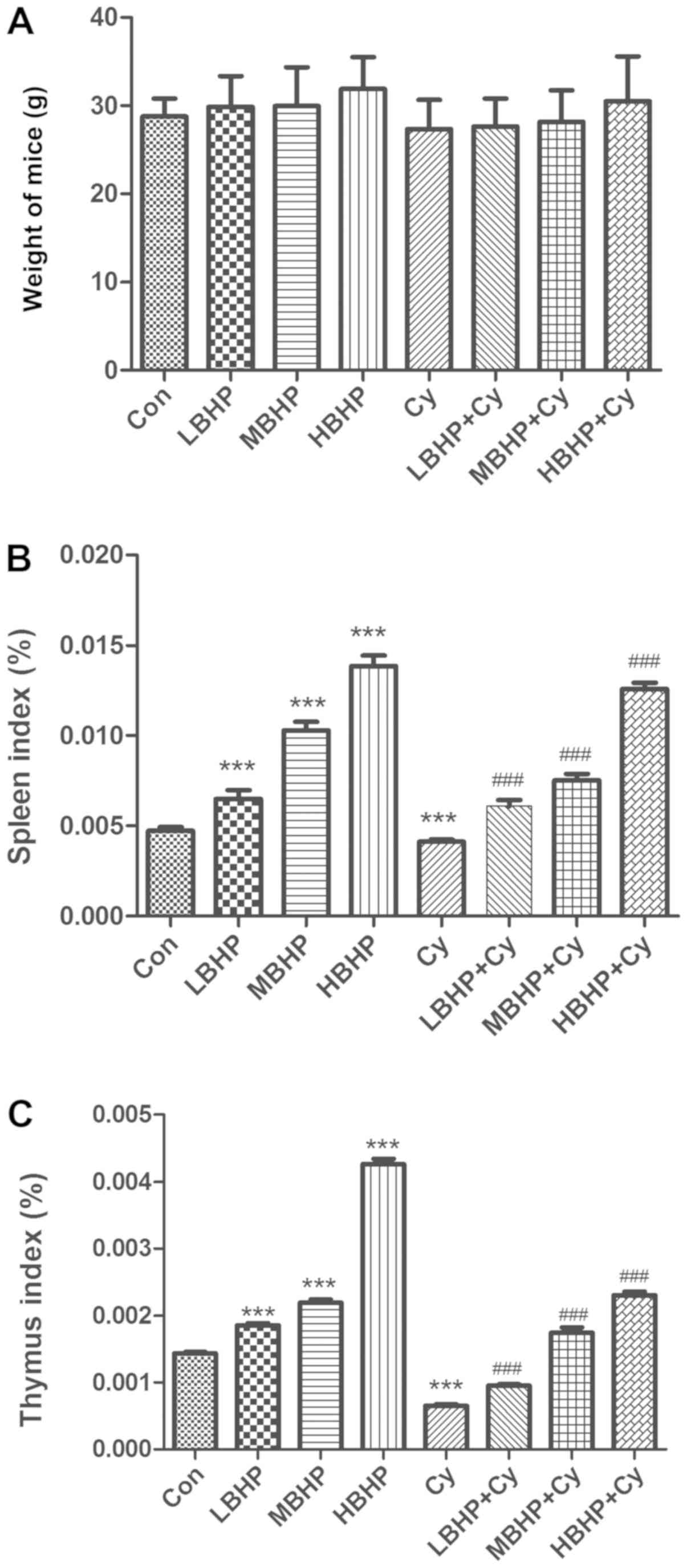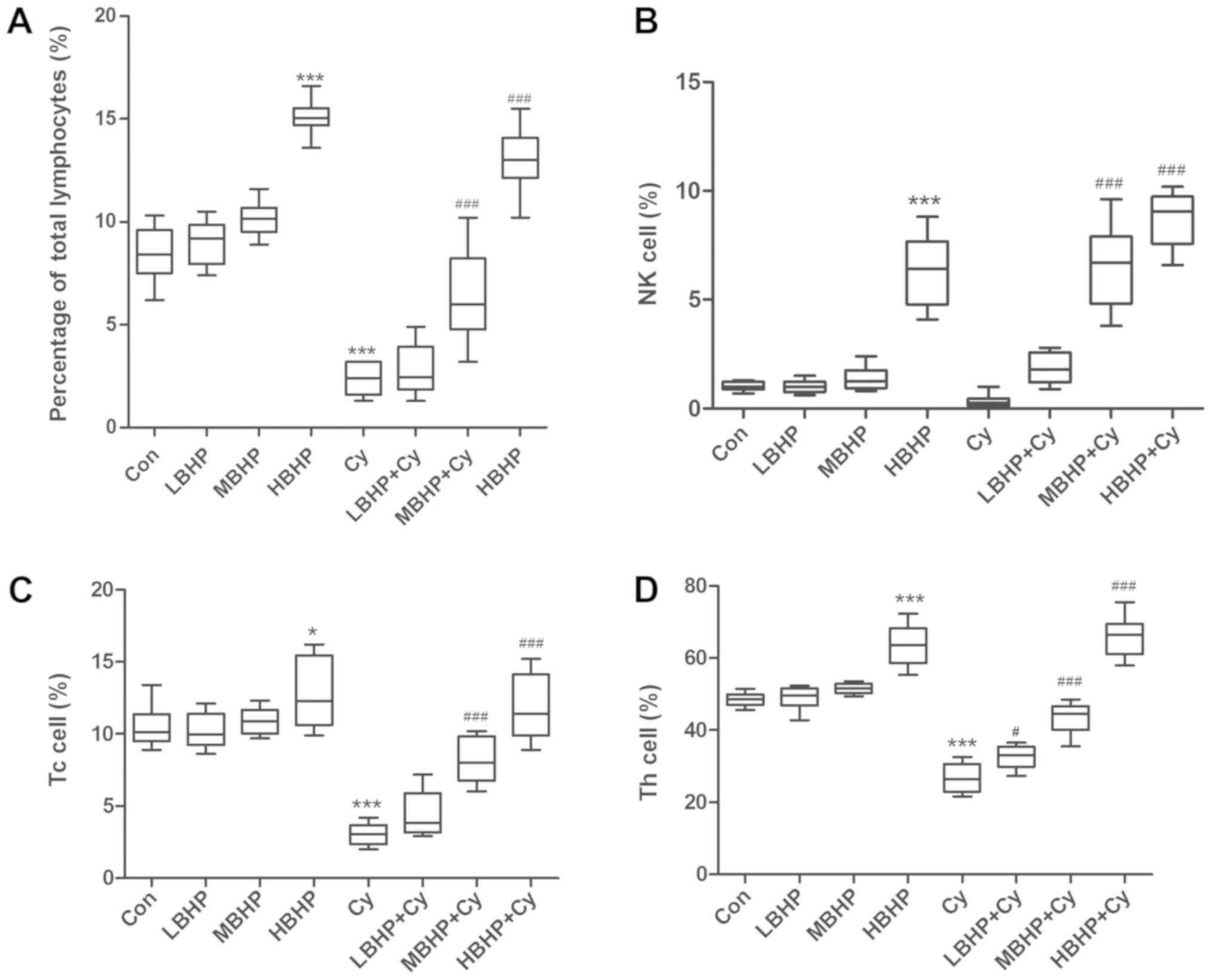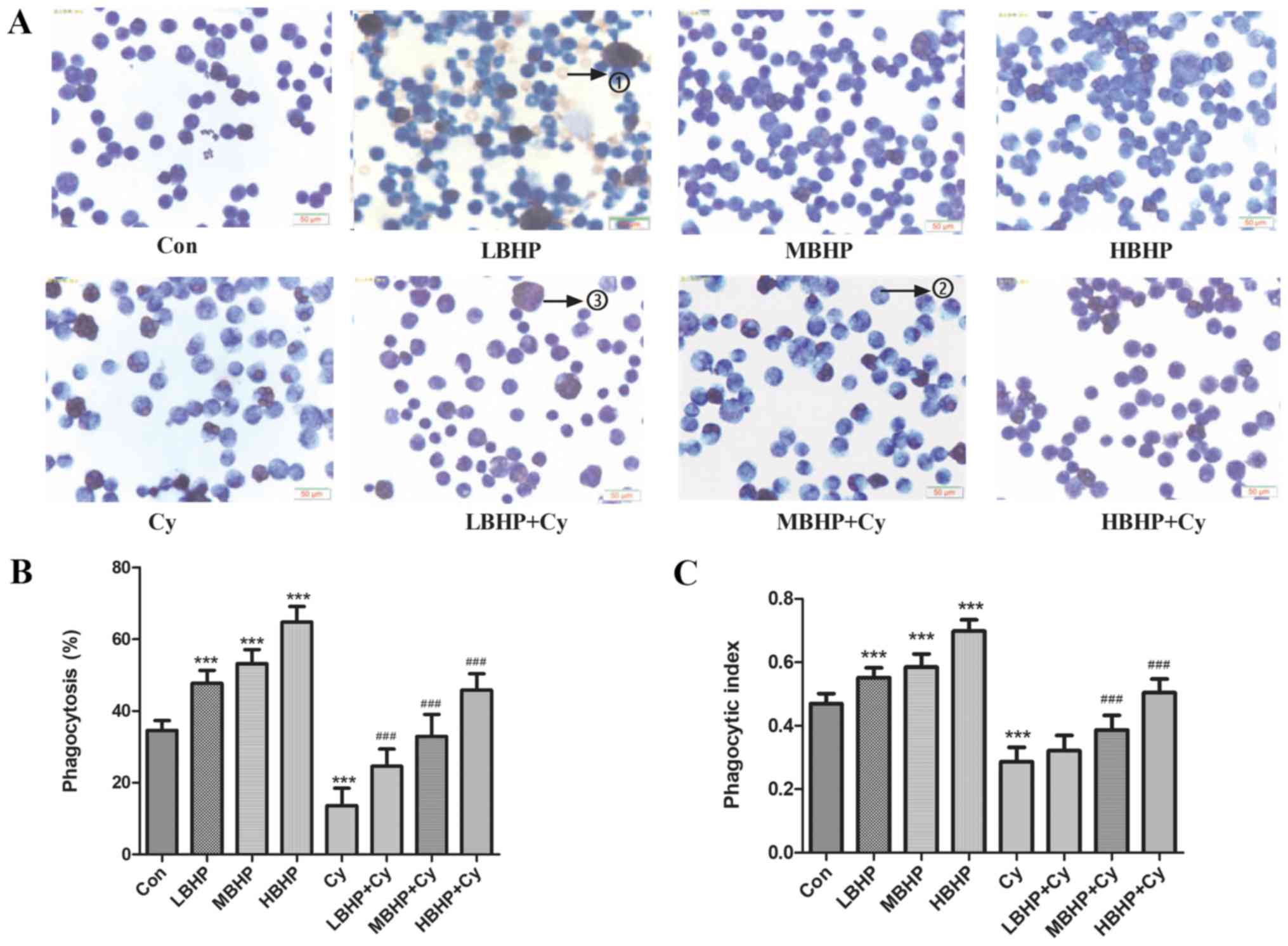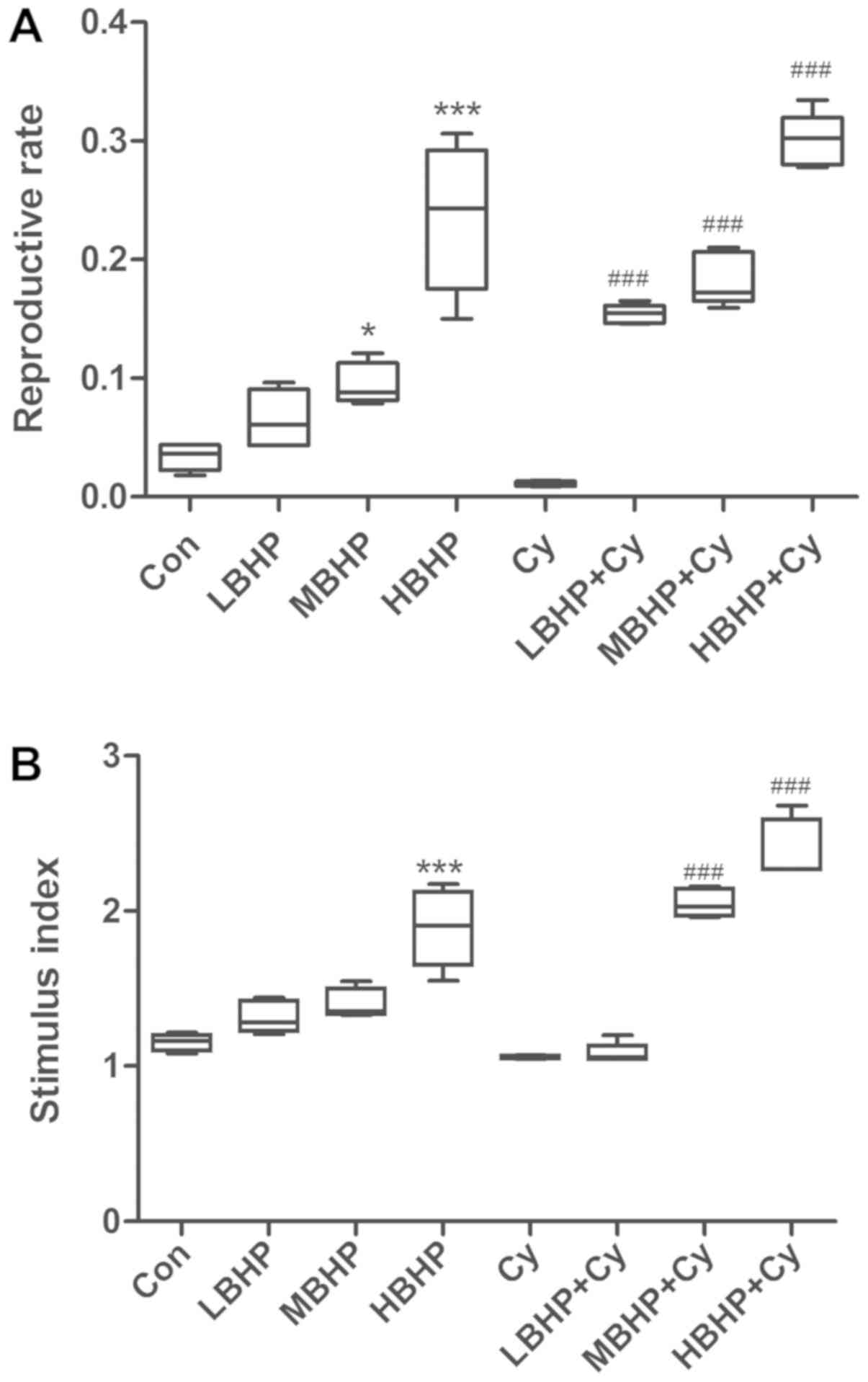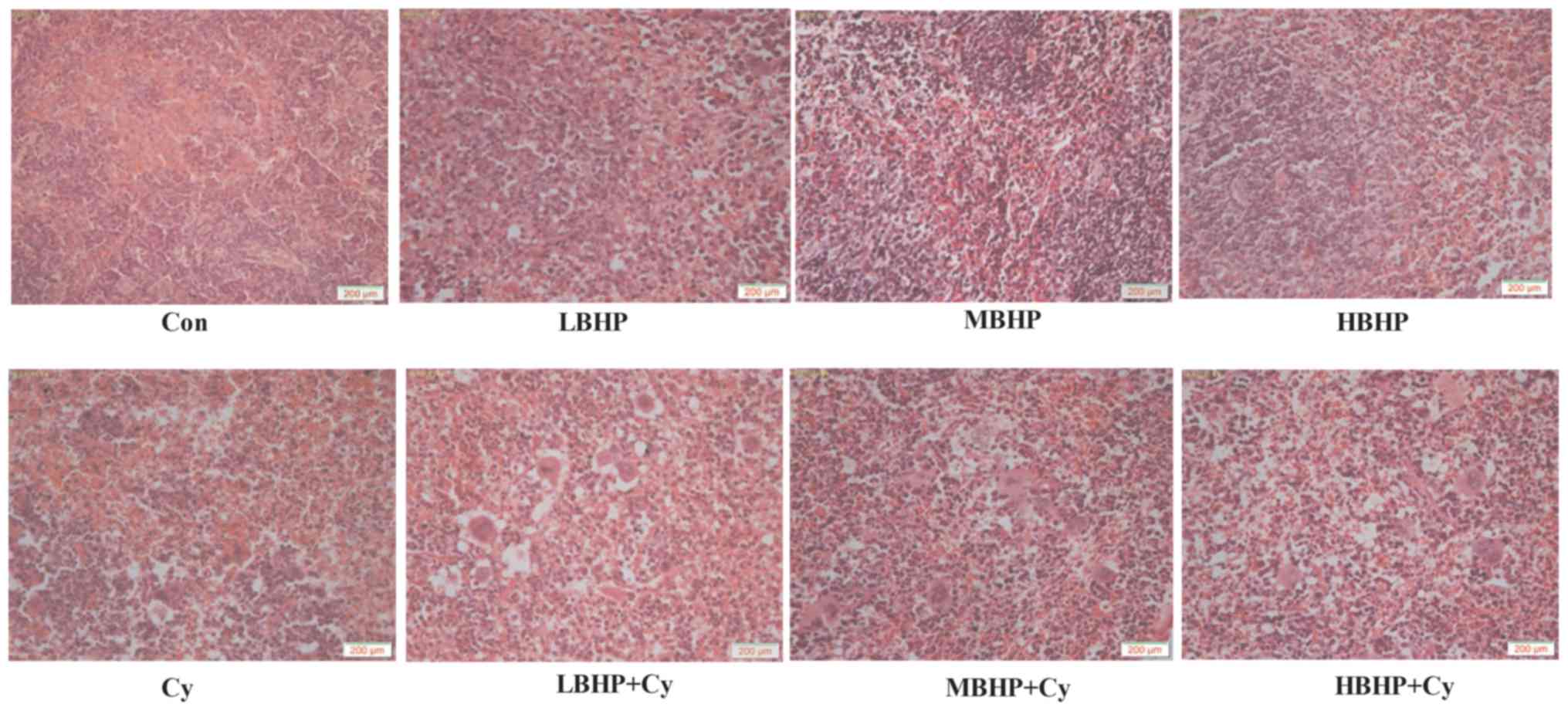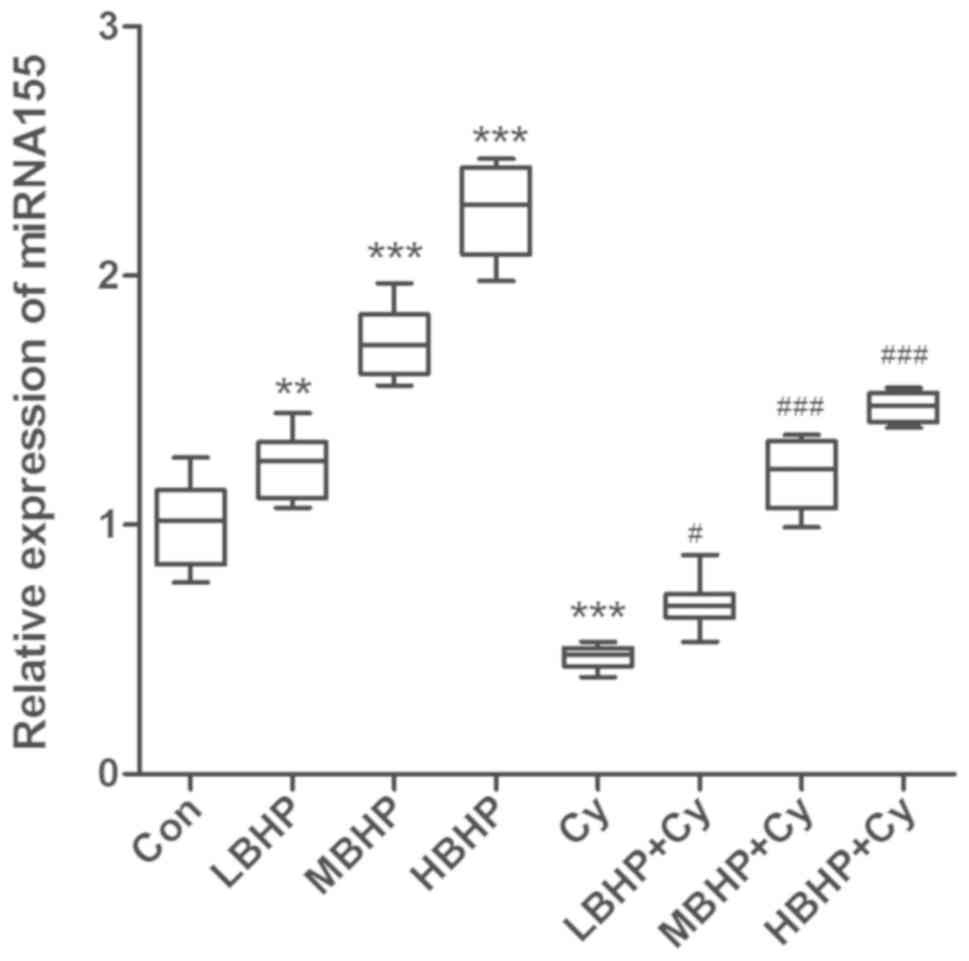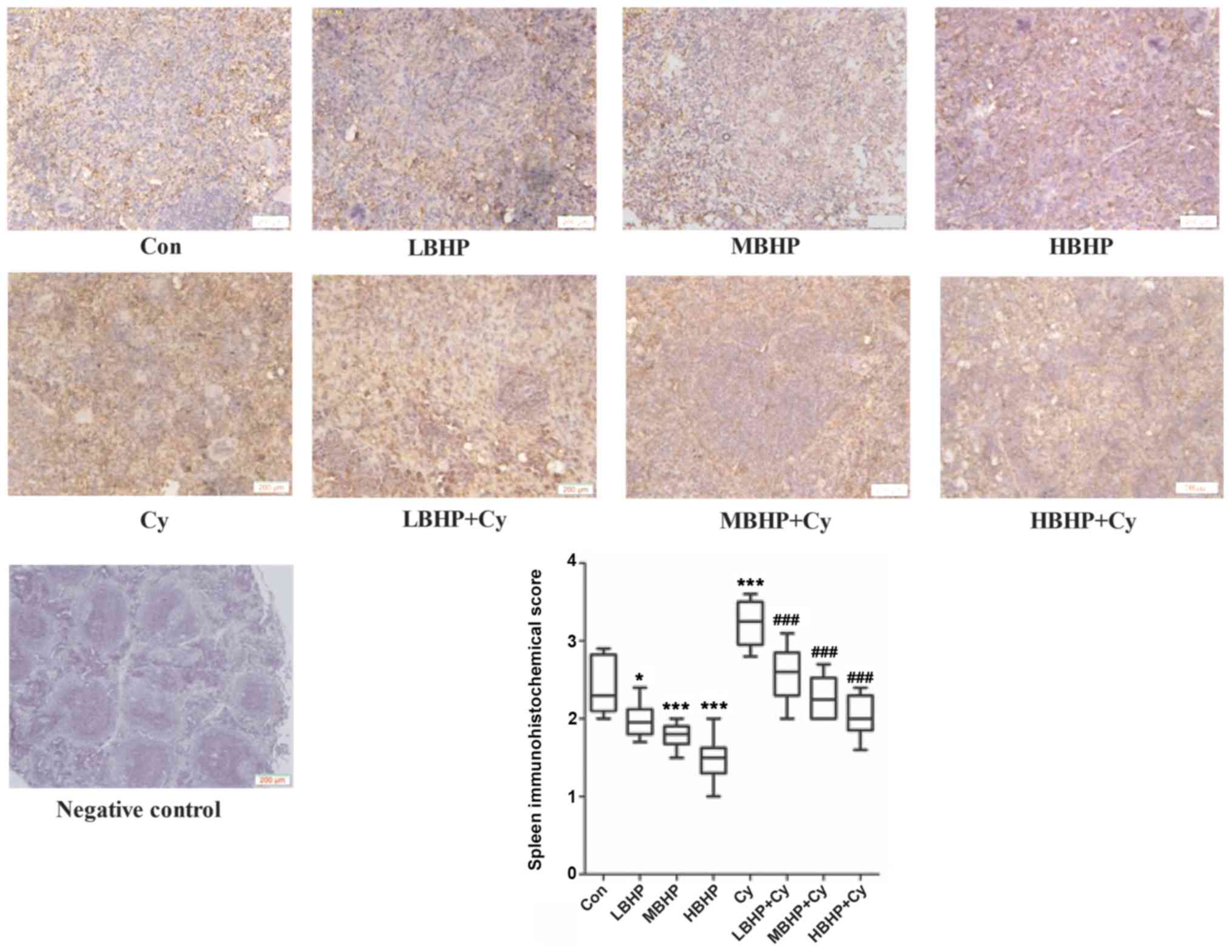|
1
|
McKenzie CG, Guo L, Freedman J and Semple
JW: Cellular immune disfunction inimmune thrombocytopenia (ITP). Br
J Haematol. 163:10–23. 2013. View Article : Google Scholar : PubMed/NCBI
|
|
2
|
Xing Z, Yu L, Li X and Su X: Anticancer
bioactive peptide-3 inhibits human gastric cancer growth by
targeting miR-338-5p. Cell Biosci. 6:532016. View Article : Google Scholar : PubMed/NCBI
|
|
3
|
Su X, Dong C, Zhang J, Su L, Wang X, Cui H
and Chen Z: Combination therapy of anti-cancer bioactive peptide
with Cisplatin decreases chemotherapy dosing and toxicity to
improve the quality of life in xenograft nude mice bears human
gastric cancer. Cell Biosci. 4:7–19. 2014. View Article : Google Scholar : PubMed/NCBI
|
|
4
|
Słotwiński R, Lech G and Słotwińska SM:
Therapeutic microRNAs in human cancer. Cent Eur J Immunol.
43:314–324. 2018. View Article : Google Scholar : PubMed/NCBI
|
|
5
|
Prabahar A and Natarajan J: ImmunemiR-A
database of prioritized immune miRNA disease associations and its
interactome. Microrna. 6:71–78. 2017. View Article : Google Scholar : PubMed/NCBI
|
|
6
|
Zhang Y, Köllmer M, Buhrman JS, Tang MY
and Gemeinhart RA: Arginine-rich, cell penetrating
peptide-anti-microRNA complexes decrease glioblastoma migration
potential. Peptides. 58:83–90. 2014. View Article : Google Scholar : PubMed/NCBI
|
|
7
|
Xiao C and Rajewsky K: MicroRNA control in
the immune system: Basic principles. Cell. 136:26–36. 2009.
View Article : Google Scholar : PubMed/NCBI
|
|
8
|
Escobar T, Yu CR, Muljo SA and Egwuagu CE:
STAT3 activates miR-155 in Th17 cells and acts in concert to
promote experimental autoimmune uveitis. Invest Ophthalmol Vis Sci.
54:4017–4025. 2013. View Article : Google Scholar : PubMed/NCBI
|
|
9
|
Preston GC, Sinclair LV, Kaskar A,
Hukelmann JL, Navarro MN, Ferrero I, MacDonald HR, Cowling VH and
Cantrell DA: Single cell tuning of Myc expression by antigen
receptor signal strength and interleukin-2 in T lymphocytes. EMBO
J. 34:2008–2024. 2015. View Article : Google Scholar : PubMed/NCBI
|
|
10
|
Sobhkhez M, Joensen LL, Tollersrud LG,
Strandskog G, Thim HL and Jørgensen JB: A conserved inhibitory role
of suppressor of cytokine signaling 1 (SOCS1) in salmon antiviral
immunity. Dev Comp Immunol. 67:66–76. 2017. View Article : Google Scholar : PubMed/NCBI
|
|
11
|
Ma C, Wang Y, Shen A and Cai W:
Resveratrol upregulates SOCS1 production by
lipopolysaccharide-stimulated RAW264.7 macrophages by inhibiting
miR-155. Int J Mol Med. 39:231–237. 2017. View Article : Google Scholar : PubMed/NCBI
|
|
12
|
Yokoyama WM, Kim S and French AR: The
dynamic life of natural killer cells. Annu Rev Immunol. 22:405–429.
2004. View Article : Google Scholar : PubMed/NCBI
|
|
13
|
Vivier E, Tomasello E, Baratin M, Walzer T
and Ugolini S: Functions of natural killer cells. Nat Immunol.
9:503–510. 2008. View
Article : Google Scholar : PubMed/NCBI
|
|
14
|
Sullivan RP, Fogel LA, Leong JW, Schneider
SE, Wong R, Romee R, Thai TH, Sexl V, Matkovich SJ, Dorn GW II, et
al: miR-155 tunes both the threshold and extent of NK cell
activation via targeting of multiple signaling pathways. J Immunol.
191:5904–5913. 2013. View Article : Google Scholar : PubMed/NCBI
|
|
15
|
Lu LF, Thai TH, Calado DP, Chaudhry A,
Kubo M, Tanaka K, Loeb GB, Lee H, Yoshimura A, Rajewsky K and
Rudensky AY: Foxp3-dependent microRNA155 confers competitive
fitness to regulatory T cells by targeting SOCS1 protein. Immunity.
30:80–91. 2009. View Article : Google Scholar : PubMed/NCBI
|
|
16
|
Banerjee A, Schambach F, DeJong CS,
Hammond SM and Reiner SL: Micro-RNA-155 inhibits IFN-gamma
signaling in CD4+ T cells. Eur J Immunol. 40:225–231. 2010.
View Article : Google Scholar : PubMed/NCBI
|
|
17
|
Okoye IS, Czieso S, Ktistaki E, Roderick
K, Coomes SM, Pelly VS, Kannan Y, Perez-Lloret J, Zhao JL,
Baltimore D, et al: Transcriptomics identifieda critical role for
Th2 cell-intrinsic miR-155 in mediating allergy andantihelminth
immunity. Proc Natl Acad Sci USA. 111:E3081–E3090. 2014. View Article : Google Scholar : PubMed/NCBI
|
|
18
|
Yao R, Ma YL, Liang W, Li HH, Ma ZJ, Yu X
and Liao YH: MicroRNA-155 modulates treg and Th17 cells
differentiation and Th17 cell function by targeting SOCS1. PLoS
One. 7:e460822012. View Article : Google Scholar : PubMed/NCBI
|
|
19
|
Yan L, Hu F, Yan X, Wei Y, Ma W, Wang Y,
Lu S and Wang Z: Inhibition of microRNA-155 ameliorates
experimental autoimmune myocarditis by modulating Th17/Treg immune
response. J Mol Med (Berl). 94:1063–1079. 2016. View Article : Google Scholar : PubMed/NCBI
|
|
20
|
Babicz-Zielinska E and Jezewska-Zychowicz
M: Conceptual model of consumer's willingness to eat functional
foods. Rocz Panstw Zakl Hig. 68:33–41. 2017.PubMed/NCBI
|
|
21
|
Bose U, Hodson MP, Shaw PN, Fuerst JA and
Hewavitharana AK: Two peptide, cycloaspeptide A and nazumamide A
from a sponge associated marine actinobacterium Salinispora sp. Nat
Prod Commun. 9:545–546. 2014.PubMed/NCBI
|
|
22
|
Pessione E and Cirrincione S: Bioactive
molecules released in food by lactic acid bacteria: Encrypted
peptides and biogenic amines. Front Microbiol. 7:8762016.
View Article : Google Scholar : PubMed/NCBI
|
|
23
|
Silk DB, Grimble GK and Rees RG: Protein
digestion and amino acid and peptide absorption. Proc Nutr Soc.
44:63–72. 1985. View Article : Google Scholar : PubMed/NCBI
|
|
24
|
Su X, Chen C, Liu Q, She Y, Yan M and Hou
J: Preparation method of anti-gastric cancer bioactive peptide.
China Patent ZL96122236.0. Filed November 4, 1996; issued September
4, 2000.
|
|
25
|
Li L, Yu L, Hu J, et al: Establishment of
separation and identification methods for bioactive peptide protein
components. Sheng Wu Ji Shu Tong Xun. 25:682–686. 2014.
|
|
26
|
Crago SS, Prince SJ, Pretlow TG, McGhee JR
and Mestecky J: Human colostral cells. I. Separation and
characterization. Am J Clin Exp Immunol. 38:585–597. 1979.
|
|
27
|
Shen QC, Lin Y, Wang SY, et al:
Identification and culture of Buffalo peripheral blood mononuclear
macrophage. China Animal Husbandry & Veterinary Medicine.
38:31–35. 2011.
|
|
28
|
Stevenson HC, Katz P, Wright DG, Contreras
TJ, Jemionek JF, Hartwig VM, Flor WJ and Fauci AS: Human blood
monocytes: Characterization of negatively selected human monocytes
and their suspension cell culture derivatives. Scand J Immunol.
14:243–256. 1981. View Article : Google Scholar : PubMed/NCBI
|
|
29
|
Ji H, Tian D, Zhang B, Zhang Y, Yan D and
Wu S: Overexpression of miR-155 in clear-cell renal cell carcinoma
and its oncogenic effect through targeting FOXO3a. Exp Ther Med.
13:2286–2292. 2017. View Article : Google Scholar : PubMed/NCBI
|
|
30
|
Zhang SP, Wang W, Gu Y, Jin L and Zhou F:
Study on the correlation between ultrasonic imaging features in
breast cancer and the expression of ER, PR, HER-2 and nm23.
Biomedical Res. 28:5925–5929. 2017.
|
|
31
|
Ke M, Wang H, Zhou Y, Li J, Liu Y, Zhang
M, Dou J, Xi T, Shen B and Zhou C: SEP enhanced the antitumor
activity of 5-fluorouracil by up-regulating NKG2D/MICA and
reversedimmune suppressionvia inhibiting ROS and caspase-3 in mice.
Oncotarget. 7:49509–49526. 2016. View Article : Google Scholar : PubMed/NCBI
|
|
32
|
Zhou G, Wang D, Liu D, Qi D and Liu Z:
Expression of B and T lymphocyte attenuator in patients with severe
community-acquired pneumonia and the effect of steroid therapy in a
mouse model. Clin Lab. 62:2367–2377. 2016. View Article : Google Scholar : PubMed/NCBI
|
|
33
|
Pavić I, Katalinić-Janković V,
Čepin-Bogović J, Rešić A and Dodig S: Discordance between
tuberculin skin test and interferon-γ release assay in children
younger than 5 years who have been vaccinated with bacillus
calmette-guérin. Lab Medicine. 46:200–206. 2015. View Article : Google Scholar
|
|
34
|
Janossy G, Snajdr J and Simakellis M:
Patterns of B-lymphocyte gene expression elicited by
lipopolysaccharide mitogen. Immunology. 30:799–810. 1976.PubMed/NCBI
|
|
35
|
Smialek M, Tykalowski B, Dziewulska D,
Stenzel T and Koncicki A: Immunological aspects of the efficiency
of protectotype vaccination strategy against chicken infectious
bronchitis. BMC Vet Res. 13:1–44. 2017.PubMed/NCBI
|
|
36
|
Yu Y, Wang H, Meng X, Hao L, Fu Y, Fang L,
Shen D, Yu X and Li J: Immunomodulatory effects of cinobufagin on
murine lymphocytes and macrophages. Evid Based Complement Alternat
Med. 2015:8352632015. View Article : Google Scholar : PubMed/NCBI
|
|
37
|
Bernard M, Furlong SJ, Power Coombs MR and
Hoskin DW: Differential inhibition of T lymphocyte proliferation
and cytokine synthesis by [6]-Gingerol, [8]-Gingerol, and
[10]-Gingerol. Phytother Res. 29:1707–1713. 2015. View Article : Google Scholar : PubMed/NCBI
|
|
38
|
Nicholson LB: The immune system. Essays
Biochem. 60:275–301. 2016. View Article : Google Scholar : PubMed/NCBI
|
|
39
|
Tsai CY, Allie SR, Zhang W and Usherwood
EJ: MicroRNA miR-155 affects antiviral effector and effector
memoryCD8 T cell differentiation. J Virol. 87:2348–2351. 2013.
View Article : Google Scholar : PubMed/NCBI
|
|
40
|
Shi J, Bo S and Miao M: Effect of
Astragalus polysaccharide on immunological function of
immunosuppressive mice induced by cyclophosphamide. Zhong Yi Xue
Bao. 31:243–246. 2016.
|
|
41
|
Cai K, Wang X, Zhang B, et al: Effects of
Curculigo chinensis polysaccharides on immune function in
immunosuppressed mice induced by cyclophosphamide. Zhong Hua Zhong
Yi Yao Za Zhi. 148–152. 2016.
|
|
42
|
Zhu X, Xu D, Chen X, et al:
Immunomodulatory effects of black chicken peptide on
cyclophosphamide-induced immunocompromised mice. Shi Pin Yu Fa Jiao
Gong Ye. 42:44–49. 2016.
|
|
43
|
Zak DE, Tam VC and Aderem A: Systems-level
analysis of inna-teImmunity. Annu Rev Immunol. 32:547–577. 2014.
View Article : Google Scholar : PubMed/NCBI
|
|
44
|
Leong JW, Sullivan RP and Fehniger TA:
microRNA managem-of NK-cell developmental and functional programs.
Eur J Immunol. 44:2862–2868. 2014. View Article : Google Scholar : PubMed/NCBI
|
|
45
|
Seregin SS and Amalfitano A: Improving
adenovirus based gene transfer: Strategies to accomplish immune
evasion. Viruses. 2:2013–2036. 2010. View Article : Google Scholar : PubMed/NCBI
|
|
46
|
Gemperle C, Schmid M, Herova M, Marti-Jaun
J, Wuest SJ, Loretz C and Hersberger M: Regulation of the formyl
peptide receptor 1 (FPR1) gene in primary human macrophages. PLoS
One. 7:1–6. 2012. View Article : Google Scholar
|
|
47
|
Galon J, Costes A, Sanchez-Cabo F,
Kirilovsky A, Mlecnik B, Lagorce-Pagès C, Tosolini M, Camus M,
Berger A, Wind P, et al: Type, density, and location of immune
cells within human colorectal tumors predict clinical outcome.
Science. 313:1960–1964. 2006. View Article : Google Scholar : PubMed/NCBI
|
|
48
|
Cortelazzo S, Tarella C, Gianni AM,
Ladetto M, Barbui AM, Rossi A, Gritti G, Corradini P, Di Nicola M,
Patti C, et al: Randomized trial comparing R-CHOP versus high-dose
sequential chemotherapy in high-risk patients with diffuse large
B-cell lymphomas. J Clin Oncol. 34:4015–4022. 2016. View Article : Google Scholar : PubMed/NCBI
|
|
49
|
Wang S, Zheng Q, Tian F, et al: Changes of
microRNA expression profiles during NKT cell development. Zhong Guo
Mian Yi Xue Za Zhi. 33:979–984. 2017.
|
|
50
|
Shaohua S: Research progress in the
regulation of SOCS1 on immune response in the body. Chin J Med
Officer. 35:1035–1037. 2010.
|
|
51
|
Liu Y: Mechanism of MiR-155 regulating T
cell activation. PhD dissertation, Di Er Jun Yi Da Xue. CNKI;
Beijing: 2011
|
|
52
|
Liu Y and Cheng X: Research Progress of
MicroRNA on host immunity regulation. Xian Dai Mian Yi Xue.
432–435. 2011.
|
|
53
|
Zhang Y, Alexander PB and Wang XF: TGF-β
family signaling in the control of cell proliferation and survival.
Cold Spring Harb Perspect Biol. 9(pii): a0221452017. View Article : Google Scholar : PubMed/NCBI
|
|
54
|
Komai T, Okamura T, Yamamoto K and Fujio
K: The effects of TGF-βs on immune responses. Nihon Rinsho Meneki
Gakkai Kaishi. 39:51–58. 2016. View Article : Google Scholar : PubMed/NCBI
|
|
55
|
Saraiva M and Garra A: The regulation of
IL-10 production by immune Cells. Nat Rev Immunol. 10:170–181.
2010. View Article : Google Scholar : PubMed/NCBI
|
|
56
|
MacNeil IA, Suda T, Moore KW, Mosmann TR
and Zlotnik A: IL-10, a novel growth cofactor for mature and
immature T cells. J Immunol. 145:4167–4173. 1990.PubMed/NCBI
|
|
57
|
Rutz S and Ouyang W: Regulation of
interleukin-10 expression. Adv Exp Med Biol. 941:89–116. 2016.
View Article : Google Scholar : PubMed/NCBI
|
|
58
|
Cao W, Chen W, Liang X, Zhou J, Wei C, Cui
S and Liu J: All-trans-retinoic acid ameliorates the inflammation
by inducing transforming growth factor beta 1 and interleukin 10 in
mouse epididymitis. Am J Reprod Immunol. 71:312–321. 2014.
View Article : Google Scholar : PubMed/NCBI
|
|
59
|
Zhang X, Jiang Z, Gu Y, Liu Y, Cao X and
Han Y: Inflammation-induced CD69+Kupffer cell feedback inhibits T
cell proliferation via membrane-bound TGF-β1. Sci China Life Sci.
59:1259–1269. 2016. View Article : Google Scholar : PubMed/NCBI
|
|
60
|
Ji H, Li Y, Jiang F, Wang X, Zhang J, Shen
J and Yang X: Inhibition of transforming growth factor beta⁄SMAD
signal by MiR-155 is involved in arsenic trioxideinduced
anti-angiogenesis in prostate cancer. Cancer Sci. 105:1541–1549.
2014. View Article : Google Scholar : PubMed/NCBI
|















